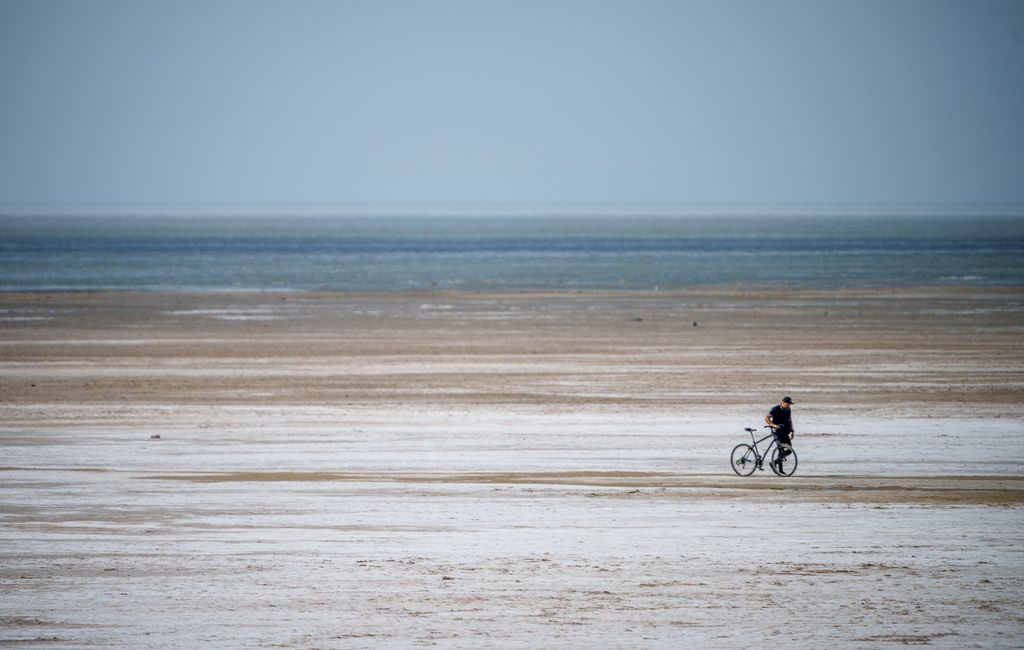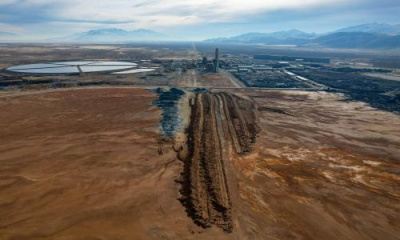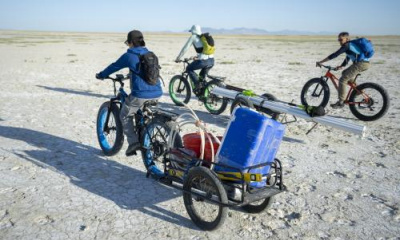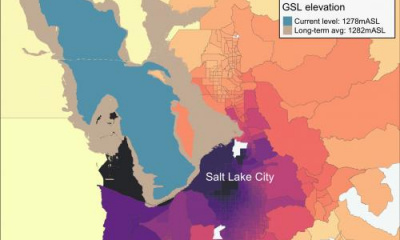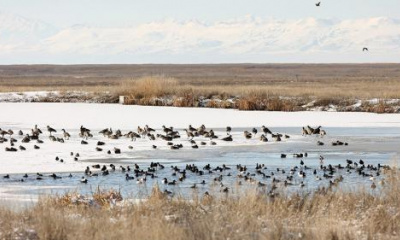Recent rains have tamped down the exposed lakebed, but drier, warmer weather is going to change that.
Recent storms kicked up dust across the Wasatch Front, creating hazy skies and unhealthy conditions.
Last weekend proved particularly bad, with the Utah Department of Environmental Quality cautioning against outdoor activity and warning those with heart or respiratory issues to be on alert.
Meanwhile, anxieties about dust storms are growing as the region’s climate gets hotter and drier. And a massive source of potential dust pollution looms at the desiccated Great Salt Lake.
“This has been the dustiest spring in at least the past 10 years that I can remember,” said Greg Carling, a geology professor at Brigham Young University who researches urban dust.
The Wasatch Front typically sees around two to three big dust storms each spring, Carling said, which he’s able to measure in mountain snowpack. This year, he’s counted six so far.
“I woke up on Saturday, and I could not see the clouds or sky,” said Laura Vernon, Great Salt Lake coordinator with the Utah Department of Natural Resources. “And I was questioning where the dust was coming from.”
Because it’s a terminal lake with no outlet except evaporation, the Great Salt Lake’s elevation rises and falls. On average, its water covers 1,700 square miles. But prolonged drought and human water consumption on its tributary rivers have shriveled the lake to 950 square miles, Vernon said, meaning nearly half its lakebed is exposed.
“What we’re concerned about is areas with salt crust,” Vernon said. “Over time, if weather and wind scour that salt away, it will lead to increased [dust pollution].”
So, are this season’s dust woes to date connected to the Great Salt Lake’s ever-growing exposed lakebed?
Probably not, according to Kevin Perry, a professor of atmospheric sciences at the University of Utah.
“My observation so far this year is that not much has come off the Great Salt Lake yet,” Perry said. “Most of it has been coming from the West Desert, and some from Sevier (Dry) Lake down south.”
That’s because recent precipitation has kept the lakebed wet enough to tamp down the dust, but Perry doesn’t expect those conditions to last. Warm weather is in the forecast, he warned, which will dry out the exposed bed enough that dust “will start coming off the lake next week or the week after.”
The Great Basin is full of ancient lakes that went dry along with other terminal waters that are on the verge of disappearing, which have long been sources of dust across Utah. The issue with the Great Salt Lake’s decline is its proximity to a major urban center.
“With dust coming off the lake, because we’re so close,” Perry said, “it’s more like plumes.”
The lakebed has four “hot spots” that are active sources of dust — one in the far northwestern corner, one near the US Magnesium plant on the west shore, one on Bear River Bay, and one on Farmington Bay.
“There are enough dust hot spots that, regardless of wind direction, everyone on the Wasatch Front is going to be hit by these things at some point,” Perry said, as will the Tooele Valley. “Everybody gets a taste of the lake, so to speak.”
The Great Salt Lake also has accumulated pollutants from its growing population for more than a century. Its waters and lakebed sediment hold toxins like arsenic and mercury. Those contaminants could pose serious risk to people exposed to them over time. But, in the short term, breathing in any fine particulate dust blowing off the lakebed can cause immediate health issues.
“They get into the bloodstream, and we can measure the body is still harboring these tiny particles three to four months later. Some may never go away,” said Brian Moench, president of Utah Physicians for a Healthy Environment. “Even though the pollution is short-lived, the health consequences are not.”
Dust has also caused fatal car crashes across the state, including a 22-vehicle pileup that killed eight last year.
While that all sounds grim, there is a silver lining. The lakebed’s salt crust continues to hold down most of the dust for now. Perry said about 75% of the bed has a protective crust.
But “when that crust starts to break down, we have more of the lake that can act as a hot spot,” he said. “Right now, only 9% is actively blowing. That will increase over time the longer the lake is not a lake.”
State scientists and regulators managing the lakebed have studied the environmental and public health disasters emanating from collapsed terminal lakes around the world, from Owens Lake in California to the Aral Sea in Central Asia.
The simplest and most cost-effective solution for the Great Salt Lake’s blowing dust, Vernon said, is also the most obvious.
“The best thing to do is keep the lake wet,” she said, “and that’s what we’re working toward.”

